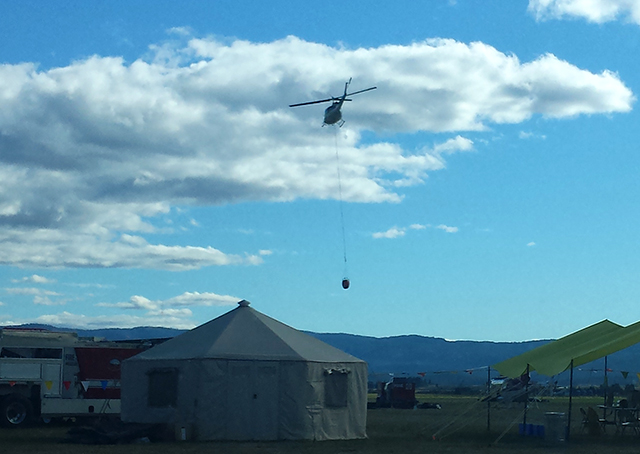
After a summer of wildfires that consumed property in California, Alaska, and much of the Mountain West, aviators are advised to steer clear of wildfires, and remain vigilant about the various temporary flight restrictions (TFRs) established to protect airspace for firefighting efforts.
TFRs were in place Oct. 1 for wildfires near Fresno and Middletown, California; John Day-Strawberry Mountain, Oregon; Dubois and Garrett, Wyoming; Deer Park, Washington; and Gibson Reservoir, Montana. Meanwhile, firefighting TFRs had expired in Idaho and Utah after blazes in those states were brought under control.
Two large wildfires in California have affected pilots since August. According to the Sacramento Bee, even air tankers and helicopters were temporarily grounded when heavy smoke from the Valley and Butte fires restricted visibility.
AOPA Western Pacific Regional Manager Melissa McCaffrey reminded pilots to be vigilant with their flight planning practices and to avoid areas affected by wildfire TFRs. “Check notices to airmen as part of the pre-fight planning process, and be aware of and prepare for TFRs that are often issued in conjunction with wildfires,” she said.
McCaffrey said the size of a firefighting TFR can vary depending upon the extent of fire, so pilots should leave plenty of room. Smoke and other hazards can drift beyond those boundaries and still put pilots in danger.
"High density altitudes and possible temperature inversions can affect aircraft performance, and strong downdrafts from smoke columns and convective buildup have the potential to initiate moderate to severe turbulence,” said McCaffrey. “Reduction of visibility due to smoke and haze could cause widespread marginal VFR conditions.”
In fact, smoke from Alaskan wildfires burning in early summer drifted all the way to the East Coast, bringing hazy conditions.
“We have talked with Cal Fire (the California Department of Forestry and Fire Protection) and others to ensure that lines of communication are open, which ensures that we get the most up to date messaging out to our members,” said McCaffrey.
AOPA provides several tools to help avoid TFRs, including an email alert system and flight planning tools. The association is also working with the military, government agencies, and providers of flight planning services to help pilots maintain awareness for TFRs. Since Sept. 28, ForeFlight has made available for download the NORAD TFR avoidance and intercept procedures card and Garmin informed AOPA that it would include the information in a future release of Garmin Pilot.
“Dangers from wildfires and firefighting efforts are real and it’s important to plan ahead and be aware of conditions near these areas that could affect flights,” McCaffrey said.



